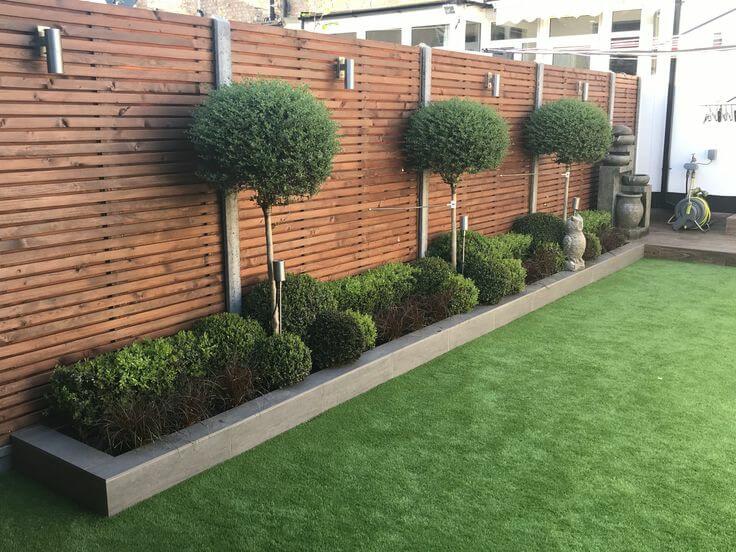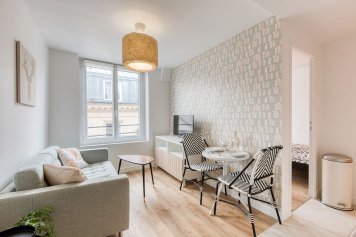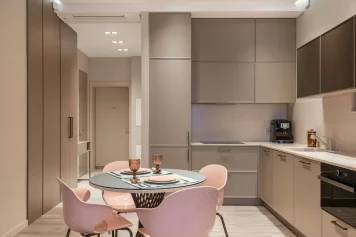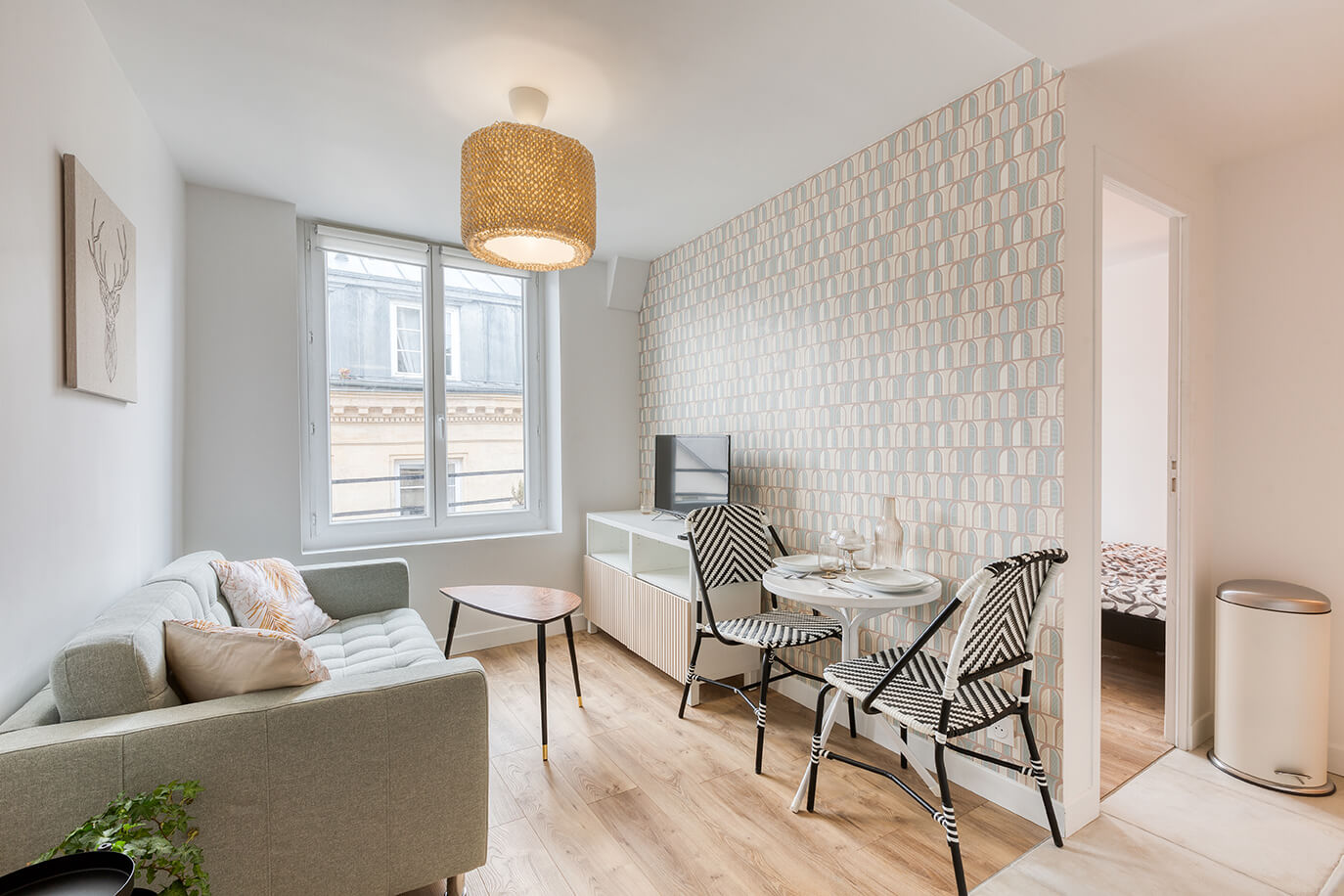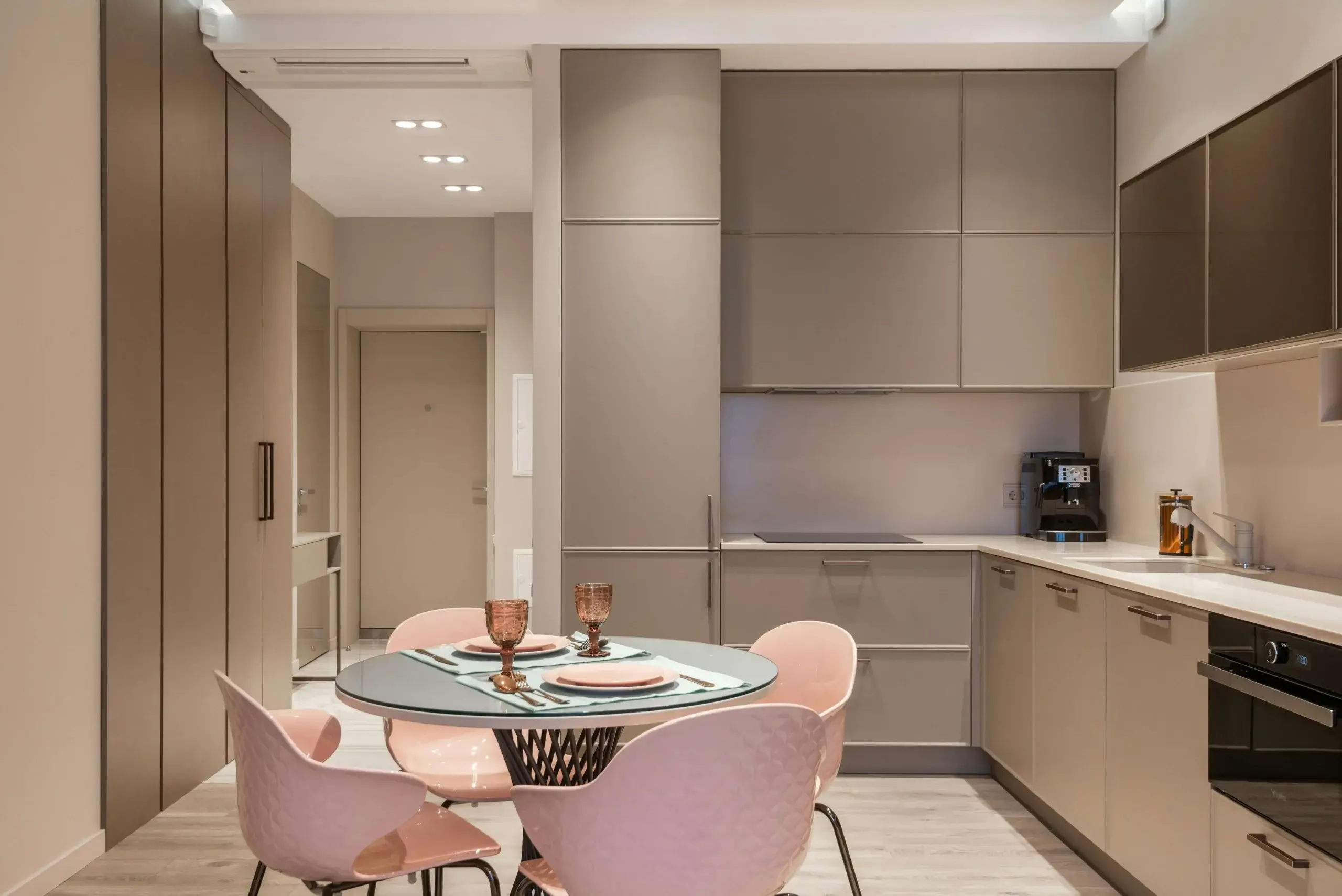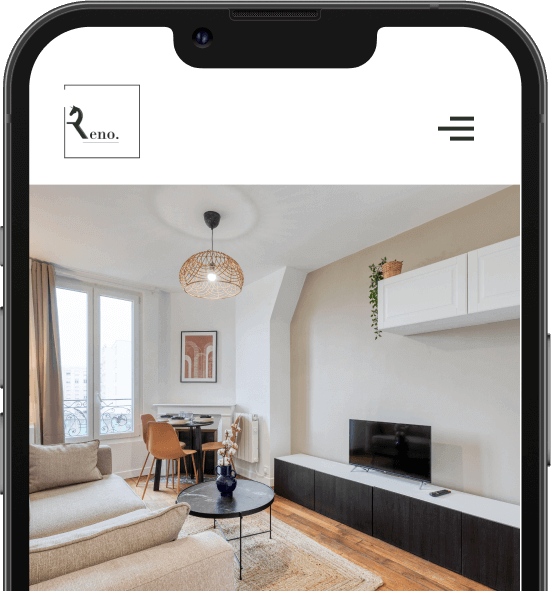Pour un aménagement jardin idéal, la création d’un espace extérieur unique est un projet passionnant. L’art d’aménager un jardin va bien au-delà de la simple disposition des plantes et des éléments décoratifs.
Imaginez un jardin où chaque coin raconte une histoire, où la tranquillité d’un jardin japonais rencontre l’élégance d’un jardin terrasse. C’est là que réside la magie de l’aménagement jardin. Vous habitez en ville ou à la campagne ? Vous rêvez d’un jardin potager luxuriant ou d’une oasis de détente avec un jardin piscine ? Il existe des solutions adaptées à chaque style de vie.
Le processus de création d’un tel sanctuaire commence par un bon plan de jardin. C’est la toile vierge sur laquelle nous pouvons exprimer nos idées les plus créatives et concevoir des jardins qui répondent à nos besoins et désirs. Des terrasses bois accueillantes aux bordures jardin délicates, en passant par les plantes grimpantes qui ajoutent une touche de verdure verticale, chaque détail compte dans l’aménagement paysager.
Dans cet article, nous explorerons ensemble des idées d’aménagement jardin inspirantes et des conseils pratiques pour transformer votre coin jardin !
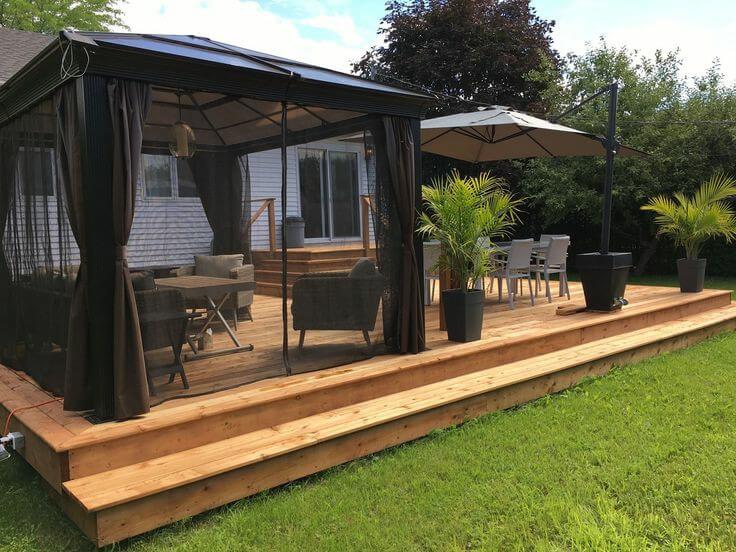
Comment aménager un jardin ?
Voici nos astuces sur comment bien aménager votre jardin.
Déterminer le style de jardin souhaité
Lorsqu’il s’agit d’aménager un jardin, la première étape cruciale est de déterminer le style de jardin souhaité. Ce choix déterminera l’atmosphère générale de votre espace extérieur. Aussi guidera-t-il toutes les décisions de conception ultérieures. Que vous aspiriez à recréer la sérénité d’un jardin japonais ou à cultiver des légumes frais dans un jardin potager, choisir le bon style de jardin est essentiel pour créer un espace qui vous ressemble !
Style | Description | Caractéristiques | Exemples |
Jardin à la française | Style classique et symétrique, inspiré des jardins du château de Versailles. | Allées rectilignes, parterres de fleurs, statues, bassins. | Château de Versailles, Jardin du Luxembourg |
Jardin anglais | Style plus naturel et paysager, inspiré des peintures de Claude Monet. | Allées sinueuses, arbres et arbustes en liberté, massifs de fleurs colorés. | Jardin de Bagatelle, Jardin des Tuileries |
Jardin japonais | Style minimaliste et zen, inspiré des jardins de Kyoto. | Pierres, graviers, mousse, arbres et arbustes taillés, lanternes. | Jardin du Luxembourg, Jardin des Plantes |
Jardin potager | Style pratique et productif, destiné à cultiver des fruits et légumes. | Carrés potagers, serres, fruitiers, plantes aromatiques. | Jardin du Potager du Roi, Jardin Albert Kahn |
Jardin contemporain | Style éclectique et design, utilisant des matériaux modernes. | Lignes épurées, formes géométriques, jeux de lumière, sculptures contemporaines. | Jardin des Tuileries, Parc de la Villette |
jardin paysager à l’anglaise
Les possibilités sont infinies lorsqu’il s’agit de choisir un style de jardin. Vous pourriez être attiré par l’élégance intemporelle d’un jardin paysager à l’anglaise. Celui-ci se caractérise par ses plates-bandes luxuriantes et ses allées sinueuses.
Jardin japonais
Peut-être, préférez-vous l’harmonie zen d’un jardin japonais ? Il se démarque para ses éléments d’eau apaisants et ses compositions végétales équilibrées.
Jardin terrasse
Pour ceux qui recherchent une oasis de détente dans un environnement urbain, un jardin terrasse peut être la solution idéale. Avec l’ajout judicieux de mobilier de jardin confortable et de plantes soigneusement sélectionnées, même le plus petit balcon peut devenir un refuge paisible au cœur de la ville.
Jardin piscine
Si vous avez la chance de disposer d’un espace plus vaste, vous pourriez envisager d’intégrer un jardin piscine dans votre aménagement paysager. Non seulement cela ajoutera une dimension ludique à votre jardin, mais cela créera également un point focal attrayant pour vos activités de plein air.
Choisir les plantes selon le climat et l’exposition
Les plantes sont les éléments vivants qui donneront vie à votre jardin et créeront une atmosphère unique et accueillante. Cependant, toutes les plantes ne prospèrent pas dans les mêmes conditions, c’est pourquoi il est important de prendre en compte ces facteurs clés lors de la sélection de votre végétation. Et n’oubliez pas, il est important de jardiner en favorisant la biodiversité.
Tout d’abord, examinez attentivement le climat de votre région. Certaines plantes préfèrent les climats chauds et ensoleillés, tandis que d’autres prospèrent dans des conditions plus fraîches et ombragées. Avant de vous lancer dans l’achat de plantes, renseignez-vous sur les conditions de croissance recommandées pour chaque espèce et assurez-vous qu’elles correspondent à celles de votre jardin.
Ensuite, évaluez l’exposition de votre espace extérieur au soleil. Les plantes qui bénéficient d’une exposition directe au soleil ont des besoins en eau et en nutriments différents de celles qui préfèrent l’ombre partielle ou totale. Assurez-vous de choisir des plantes qui s’épanouiront dans les conditions spécifiques de votre jardin pour garantir leur survie et leur santé à long terme.
Choisissez des variétés qui complètent le style de jardin que vous avez choisi, qu’il s’agisse d’un jardin paysager formel avec des bordures impeccables ou d’un jardin paysage sauvage et naturel. Les plantes grimpantes ajoutent de la verticalité et de la texture, tandis que les arbustes vivaces et les graminées apportent de la couleur et de la structure à votre jardin.
Créer une certaine harmonie entre le bâti et le jardin
Pour créer un espace extérieur véritablement harmonieux, il est essentiel d’harmoniser le bâti et le jardin dans votre projet d’aménagement jardin. Cette harmonie entre les éléments architecturaux de votre maison et les éléments naturels de votre jardin est essentielle pour créer une esthétique cohérente et attrayante qui met en valeur votre propriété dans son ensemble.
L’un des moyens les plus efficaces d’harmoniser le bâti et le jardin est de choisir des matériaux et des couleurs qui complètent l’architecture de votre maison. Par exemple, si votre maison est construite en brique rouge, vous pouvez choisir des éléments de jardin terrasse en pierre naturelle ou en bois. Ceux-ci se marient bien avec ce matériau et qui créent une transition fluide entre l’intérieur et l’extérieur.
De même, pensez à intégrer des éléments de décoration jardin qui reflètent le style de votre maison. Si vous avez une maison de style traditionnel, des bordures de jardin en fer forgé ou des statues classiques peuvent ajouter une touche d’élégance intemporelle à votre espace extérieur. Pour une maison moderne, des lignes épurées et des matériaux contemporains comme le béton ou l’acier peuvent être plus appropriés.
L’aménagement paysager peut également jouer un rôle clé dans l’harmonisation du bâti et du jardin. Ainsi, vous pouvez créer une transition naturelle entre l’intérieur et l’extérieur. Par exemple, vous pouvez installer une terrasse en bois près de la cuisine pour les repas en plein air, et créer un coin détente avec des chaises longues près de la piscine pour se détendre au soleil.
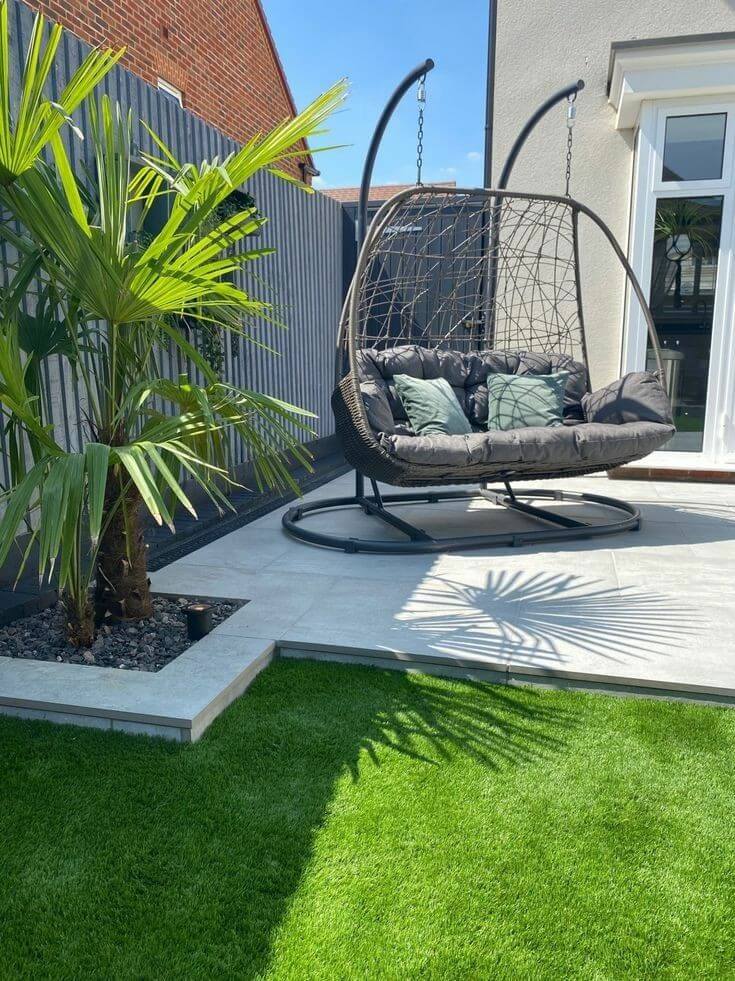
Adapter le contenu du jardin
Comme pour l’aménagement balcon, la première étape pour aménager un jardin qui répond à vos besoins est de déterminer comment vous prévoyez de l’utiliser. Si vous aimez cuisiner avec des ingrédients frais, vous pouvez envisager d’intégrer un jardin potager dans votre conception. Vous pouvez planifier des rangées de légumes et d’herbes aromatiques pour maximiser votre récolte et créer un espace pratique et productif.
Si vous cherchez un endroit pour vous détendre et vous divertir, pensez à inclure une zone de loisirs dans votre jardin paysage. Une terrasse en bois avec des meubles de jardin confortables et un espace barbecue peut être l’endroit idéal pour accueillir des soirées entre amis et en famille.
Pour ceux qui recherchent la tranquillité et la méditation, un jardin japonais peut être une option attrayante. Inspiré par les principes du zen, un jardin japonais utilise des éléments naturels comme les pierres, l’eau et les plantes pour créer un espace de calme et de réflexion.
Quels que soient vos besoins et vos préférences, assurez-vous de prendre en compte les aspects pratiques de l’aménagement jardin. Tenez compte de l’exposition au soleil, du drainage du sol et de l’accès à l’eau lorsque vous choisissez les emplacements pour vos plantes et vos éléments de décoration.
Mettre en place une ossature végétale solide
Il est essentiel de définir une ossature végétale solide dès le début du processus d’aménagement jardin. Cette ossature végétale servira de structure de base pour votre jardin.
La première étape pour définir une ossature végétale est de sélectionner des plantes arbustives et des arbres qui apporteront de la structure et de la verticalité à votre jardin. Les arbustes à feuillage persistant, tels que les buissons et les lauriers, peuvent être utilisés pour créer des haies et des bordures qui définissent les limites de votre espace extérieur et ajoutent de l’intimité.
Ensuite, pensez à incorporer des arbres à votre plan de jardin pour fournir de l’ombre, de la hauteur et de la texture à votre paysage. Les arbres à feuilles caduques comme les érables et les saules offrent un spectacle spectaculaire en automne. Les conifères, quant à eux (les cyprès et les pins), ajoutent de la verdure toute l’année.
Une fois que vous avez sélectionné les plantes structurelles de base, pensez à ajouter des plantes grimpantes et des plantes tapissantes pour remplir les espaces et ajouter de la profondeur à votre jardin. Les vignes comme le jasmin et la clématite peuvent être utilisées pour habiller les murs et les treillis. Pour un effet doux et invitant, plantez les couvre sols, comme le thym et la pervenche entre les dalles de votre jardin terrasse.
Enfin, n’oubliez pas d’intégrer des éléments non végétaux dans votre ossature végétale pour ajouter de la structure et de l’intérêt visuel à votre jardin. Les bordures en pierre ou en métal peuvent être utilisées pour délimiter les plates-bandes et les allées. Vous pouvez aussi opter pour les statues et les sculptures peuvent servir de points focaux décoratifs.
Combiner habilement les volumes et couleur des végétaux
Lors de la sélection des plantes pour votre jardin paysage, pensez à incorporer une variété de hauteurs pour créer des niveaux visuels intéressants. Les arbres et les arbustes hauts peuvent être utilisés pour créer un cadre naturel et fournir de l’ombre. Vous pouvez aussi opter pour les plantes de taille moyenne, comme les vivaces et les graminées pour remplir l’espace intermédiaire avec des couleurs et des textures variées.
En outre, pensez à utiliser des plantes au feuillage coloré pour ajouter des touches vives et éclatantes à votre aménagement jardin. Les feuillages rouges, jaunes et pourpres peuvent créer des points d’intérêt visuel tout au long de l’année, tandis que les fleurs saisonnières ajoutent des éclats de couleur saisonniers à votre paysage.
N’oubliez pas non plus de jouer avec les textures des plantes pour créer un intérêt visuel supplémentaire. Les feuillages lisses et brillants peuvent contraster avec les feuillages rugueux et texturés pour créer un effet saisissant, tandis que les plantes aux feuillages dentelés et délicats peuvent ajouter une touche de féminité et de grâce à votre jardin.
Enfin, pensez à utiliser les principes de la couleur pour créer une palette harmonieuse dans votre jardin paysager. Les couleurs chaudes comme le rouge, l’orange et le jaune peuvent créer une ambiance chaleureuse et accueillante, tandis que les couleurs froides comme le bleu, le violet et le vert apportent une sensation de fraîcheur et de tranquillité.
Optimiser l’entretien du jardin
Pour minimiser les temps d’entretien du jardin, choisissez des plantes adaptées à votre climat et à vos conditions de croissance spécifiques. Optez pour des espèces indigènes et résistantes aux maladies qui nécessitent peu d’arrosage et de fertilisation, et qui sont capables de prospérer avec un minimum d’intervention humaine. Les plantes vivaces et les arbustes à croissance lente sont souvent de bons choix, car ils nécessitent moins de taille et d’entretien régulier que les plantes annuelles et les arbustes à croissance rapide.
En outre, pensez à utiliser des matériaux durables et à faible entretien dans votre jardin paysager. Les graviers et les paillis peuvent être utilisés pour couvrir les zones non plantées, réduisant ainsi la croissance des mauvaises herbes et le besoin de désherbage régulier. Les bordures en pierre ou en métal peuvent être utilisées pour délimiter les plates-bandes et les chemins, offrant une structure visuelle tout en minimisant l’entretien nécessaire.
Une autre stratégie pour minimiser les temps d’entretien du jardin est de concevoir votre plan de jardin de manière à réduire les zones difficiles à entretenir. Évitez les formes et les configurations complexes qui nécessitent beaucoup de travail de taille et de désherbage, et optez plutôt pour des lignes épurées et des formes simples qui sont faciles à maintenir.
Intégrer des éléments architecturaux
Une des façons les plus populaires d’intégrer des éléments architecturaux dans votre jardin paysager est d’installer un jardin terrasse. Fabriquée en matériaux tels que le bois, la pierre ou le béton, une terrasse offre un espace plat et stable pour placer des meubles de jardin, des pots de fleurs et même un barbecue pour les repas en plein air. Que vous rêviez d’un coin lecture tranquille ou d’un espace de réception animé, une terrasse peut être adaptée à vos besoins spécifiques.
Les piscines sont un autre élément architectural populaire dans les aménagements paysagers, ajoutant une touche de luxe et de rafraîchissement à votre jardin. Que vous optiez pour une piscine hors sol simple ou pour une piscine creusée plus élaborée, une piscine peut devenir le point focal de votre espace extérieur, attirant les regards et créant une ambiance de vacances chez vous.
Pour ceux qui cherchent à maximiser leur espace extérieur, l’ajout d’une pergola ou d’une tonnelle peut être une excellente option. Ces structures fournissent de l’ombre et de l’intimité, tout en ajoutant une touche d’élégance architecturale à votre jardin. Vous pouvez les habiller avec des plantes grimpantes comme des glycines ou des roses pour une ambiance romantique et pittoresque.
Enfin, ne négligez pas l’importance des bordures et des chemins dans votre aménagement paysager. Les bordures en pierre ou en métal délimitent les différentes zones de votre jardin. En revanche, les chemins pavés ou en gravier guident les visiteurs à travers l’espace et ajoutent une touche de charme rustique.
Comment obtenir un devis aménagement jardin sur-mesure ?
Pour obtenir un devis aménagement jardin sur-mesure, il est essentiel de trouver un professionnel de confiance qui comprendra vos besoins et vos aspirations en matière d’aménagement paysager. La première étape consiste à rechercher des entreprises spécialisées dans l’aménagement jardin dans votre région. Vous pouvez commencer par consulter des annuaires en ligne, lire des avis clients et demander des recommandations à vos amis et voisins.
Une fois que vous avez identifié quelques entreprises potentielles, prenez le temps de parcourir leur site web et de découvrir leur portfolio. Cela vous donnera une idée de leur style et de leur niveau d’expertise en matière d’aménagement paysager. Vous pouvez également vérifier s’ils offrent des services complémentaires tels que la conception assistée par ordinateur avec des outils, comme Draw Garden pour visualiser votre projet avant qu’il ne soit réalisé.
Une fois que vous avez présélectionné quelques entreprises, contactez-les pour demander un rendez-vous pour discuter de votre projet. Lors de cette réunion, assurez-vous de partager vos idées et vos objectifs avec le professionnel et de poser toutes les questions que vous pourriez avoir sur le processus d’aménagement jardin et les coûts associés.
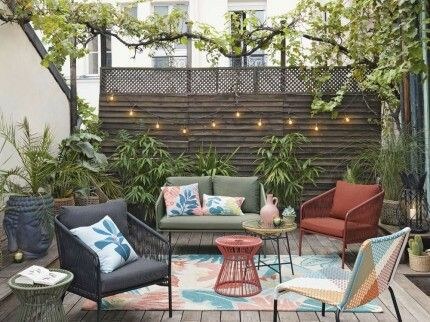
Quels sont les éléments du devis aménagement jardin ?
Après avoir discuté de votre projet en détail, le professionnel pourra vous fournir un devis sur-mesure aménagement jardin. Ce devis devrait inclure une estimation des coûts pour la conception, la fourniture des matériaux, la main-d’œuvre et tout autre service nécessaire à la réalisation de votre projet.
Avant de prendre une décision, assurez-vous de comparer les devis de plusieurs entreprises pour vous assurer d’obtenir le meilleur rapport qualité-prix. N’oubliez pas de prendre en compte non seulement le coût total. Mais aussi, la réputation de l’entreprise, la qualité de son travail et sa capacité à respecter les délais.
Combien coûtent les travaux d’aménagement jardin ?
Type de travaux | Coût moyen (€/m²) | Fourchette de prix (€/m²) |
Création d’une pelouse | 10 – 20 | 5 – 30 |
Pose d’une terrasse | 100 – 200 | 50 – 300 |
Plantation d’une haie | 20 – 50 | 10 – 100 |
Installation d’un arrosage automatique | 20 – 40 | 10 – 50 |
Création d’un bassin | 200 – 500 | 100 – 1000 |
Clôture | 30 – 100 | 20 – 200 |
Allée de jardin | 20 – 50 | 10 – 100 |
Abri de jardin | 100 – 300 | 50 – 500 |
Éclairage extérieur | 10 – 50 | 5 – 100 |
N’hésitez pas à négocier les prix, surtout si vous faites appel à plusieurs entreprises pour différents travaux.
Exemples de devis aménagement jardin
Vous envisagez d’aménager votre jardin et vous recherchez des idées inspirantes pour créer un espace extérieur qui correspond à vos envies et à vos besoins ? Voici quelques exemples de devis d’aménagement jardin pour vous guider dans votre projet.
Prestation | Surface | Prix Unitaire | Coût Total |
Création d’une pelouse | 100 m² | 10 €/m² | 1 000 € |
Pose d’une terrasse en bois | 20 m² | 150 €/m² | 3 000 € |
Plantation d’une haie | 50 ml | 20 €/ml | 1 000 € |
Installation d’un arrosage automatique | 100 m² | 20 €/m² | 2 000 € |
Création d’un bassin | 10 m² | 500 €/m² | 5 000 € |
Total | 12 000 € |
Avec l’aide de professionnels de l’aménagement paysager, vous pourrez transformer votre jardin en un véritable havre de paix où vous pourrez vous détendre et profiter de la nature.
Obtenir un aménagement jardin réussi !
En conclusion, l’aménagement jardin va bien au-delà de la simple décoration extérieure. C’est une expression de notre style de vie, de nos valeurs et de notre connexion avec la nature. En aménageant un jardin, nous créons un espace qui nourrit notre âme et ravit nos sens à chaque saison. Que votre vision inclue un jardin japonais serein ou un espace convivial pour divertir famille et amis, il est essentiel de commencer par un solide plan de jardin.
Grâce aux merveilles de la technologie moderne, il est plus facile que jamais de visualiser et de perfectionner votre conception avant de mettre les mains dans la terre. Avec des options infinies pour les terrasses bois, les bordures jardin, et les plantes grimpantes.
Alors, où que votre prochain projet d’aménagement paysager piscine ou de jardin potager vous mène, n’oubliez pas de laisser libre cours à votre imagination et à votre passion. Reno met à votre disposition les bonnes idées et les bons outils pour aménager le jardin de vos rêves. N’hésitez pas à nous contacter dès maintenant pour parler de votre projet !

